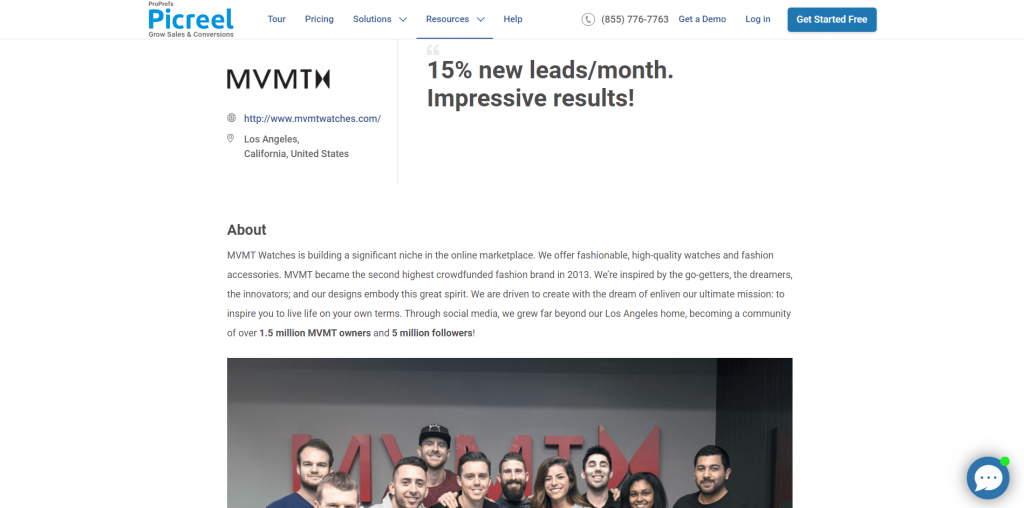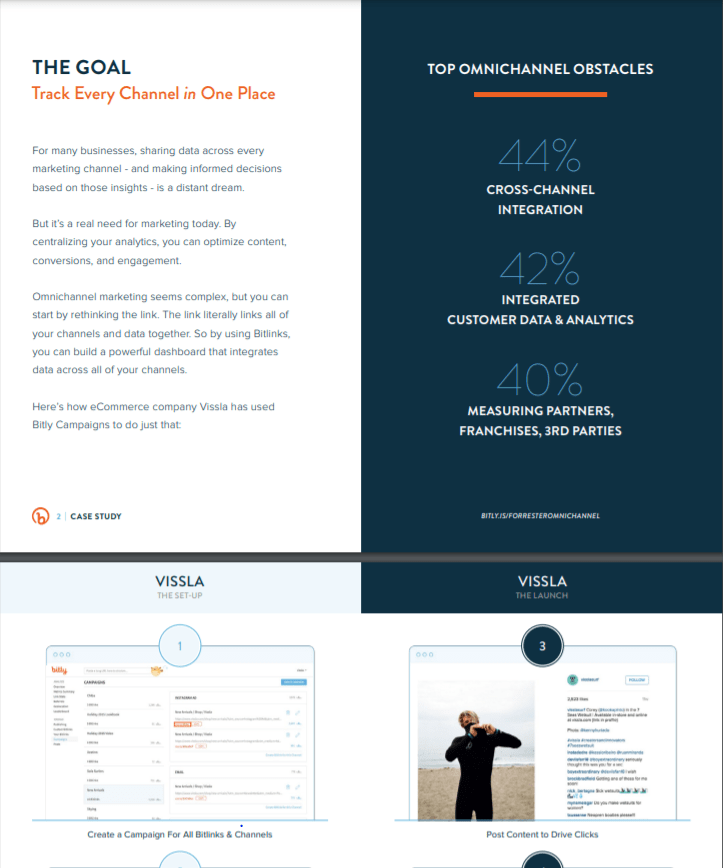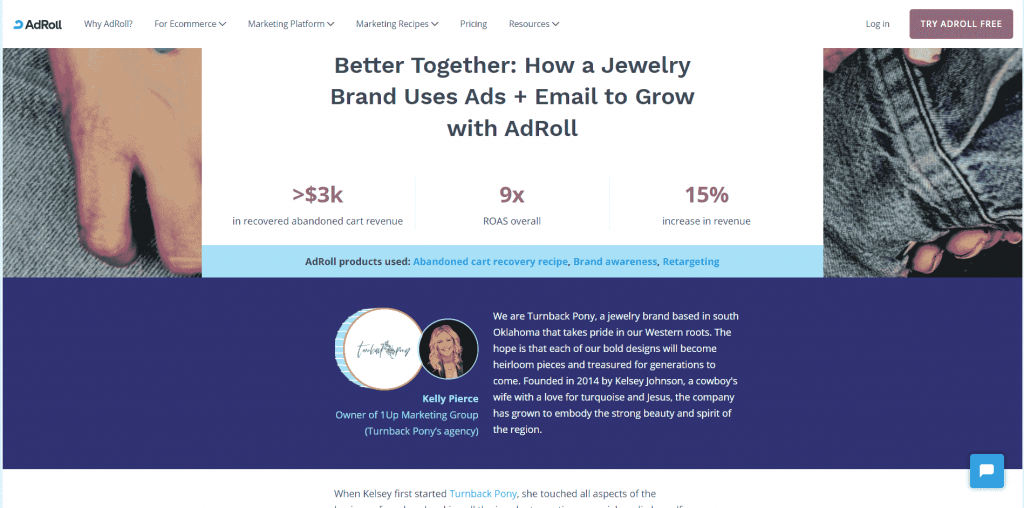
Case studies are important to boost your leads, sales, and conversions. They provide real-life examples of customers who achieved their goals with your products or services.
It is one of the most crucial steps to earn the trust of your potential customers, and earning trust is a challenging process. You need to prove that you’re as good as your content on the website speaks.
At the same time, you need to keep the visitors engaged with your delightful case study structure. It allows you to show and tell a story about how you can help your customers in different ways.
A lot of examples of case studies out there are boring and visitors won’t fall for boring stuff as they just couldn’t deliver the value. It’s time for a change as you need to showcase your in-depth case studies in a way that visitors start loving the customers’ success stories.
But, how to write a case study? There’s no standard writing guide provided for that in marketing books. We will cover it all in this guide.
What is a Case Study
Case studies – or as they’re sometimes called, customer success stories, influence people’s buying decisions. They highlight the positive experience that some of your customers had while using your product, demonstrating that the reader can enjoy the same results. Just like normal stories, case studies have a start (usually customer’s intro and problem), a middle (solution), and an end (results/end goal). But, how a case study is written plays a major role in whether it’s able to do its job.
The readers should be able to easily relate to the problems of your featured customers and see themselves finding solutions using your product/service. These are not advertisements or press releases about your company’s journey. It is all about the customers, and the tone is set accordingly. Let’s check out how case studies can be beneficial for business and why you should create these.
Why Create a Marketing Case Study
Case studies may not be among the top results on search engines, but once the visitors are on your website, they are one of the most effective ways to generate leads and drive sales. This brings us to the question – why so, and should you create marketing case studies?
As per a study conducted by B2B Marketing, case studies/success stories are ranked the third most influential content format, with 31% of marketers using these to grow their business. The results are surely surprising, and so are the benefits of writing awesome marketing case studies.
Let’s check this whole tactic with an example.
Imagine that you offer CRM software for small businesses. You have all the basic and advanced features along with customization options to fit the needs of different industries. Around 5 of your competitors also offer similar features with comparable pricing plans. Now, put yourself in the customer’s shoes and see what can be the deciding factor to get the software subscription?
You have compared the features and pricing plans, checked out the interface, and other important things. Now, a couple of your competitors have creatively designed case studies that illustrate how their software helped top brands to manage their customer relationships. On the other hand, you haven’t designed such a study to display on your website.
Which company would you trust and choose?
The answer is right in front of you. With case studies, you help your leads in making more informed decisions. So, how to write a good case study? Let’s get right into it.
How to Create a Compelling Case Study
Whether you’re writing from a B2B (business-to-business) or B2C (business-to-consumer) perspective, the following details will help you create a marketing tool that pays dividends for years to come.
1 – Start By Featuring The Right Customer
Your customer success story is only as good as the customer you feature in it. You want someone who is excited to be using your product because of the results they’re getting. The customer should also be able to articulate the benefits they’ve enjoyed from using it clearly. While you’re not asking your customer to write the case study, you need to be able to convey their excitement to the reader accurately.
Try to select someone your audience can relate to. If you’re targeting operations managers in your industry, feature someone in that position for your case study. If you’re targeting small business owners, feature an entrepreneur.
2 – Identify Your Customers’ Goals And Challenges
This is not the time to wax eloquent about why your company is the best in its field. The only reason people are going to read your case study is to find out whether your product solved their problem for someone else. If your story doesn’t address the challenges they’re dealing with; it won’t have any influence over their decision to buy.
You need to understand your audience. You must be able to recognize what they’re trying to accomplish as well as the problems that are getting in their way. Only then will you be able to create a customer success story that addresses their needs.
3 – Position Your Product As The Solution
Once you’ve identified your audience’s goals and challenges, you can then position your product as the answer to their problems. Create a list of interview questions for your customer that guides the story to its desired end: showcasing your customer’s impressive results.
Coming up with the right questions is an art form. A lot of case studies start strong but unravel as the customer loses direction. That’s usually the fault of the interview questions. Your job is to come up with questions that create a linear and logical path to the customer’s results. Along the way, you’ll want to call attention to how the customer implemented your product and their experience while using it.
Every answer your customer gives should point to your product as the solution to their business challenges. If you’ve targeted the right audience, your product will also be the solution to the reader’s challenges.
4 – Highlight Your Customer’s Results
When it comes to results, nothing compels like real numbers. Hearing that someone increased their sales by using your product is one thing. But hearing that they boosted their first-quarter sales by 217% is something entirely different. It’s much more real and persuasive.
The part of your case study that your reader is most interested in is the segment that reveals your customer’s results. Everything else is a prelude. It’s the appetizer to the main course. But you must use real numbers to have an impact. Neglecting to do so will be a major disappointment to the reader. The omission will cut the legs out from under the rest of your story.
Whether you’re highlighting your customer’s sales, traffic to their website, or a change in the company’s productivity, clarify the effect your product had by including hard figures.
5 – Optimize Your Case Study For Readability
Once you’ve interviewed your customer and created the content for your case study, you’ll have several options regarding how to present it. Readability is the key. The easier it is to read your case study, the more likely the reader will stick around for the entire ride. Here are a few tips for making your customer’s story as readable as possible.
- Use plenty of white space and bullet points wherever it’s appropriate. That creates small chunks of information that are easy for the reader to “digest.”
- Include photos that show your customer using your product. Don’t be afraid to include yourself in one of the photos. Your face will help the reader make a connection with your company!
- Use subheadings to guide the reader from the challenge, through the solution, and finally to the results.
6 – A/B Test Different Formats
Sometimes sticking with the same old text-only format is not enough for readers. You need to be creative with different elements on your case study page. Try to include infographics, images, webinars, video/audio podcasts for highlighting case studies.
Quote the customer in their own words and highlight such quotes to grab visitors’ attention. Change the different sections by playing with the design and layout of the page. A/B test different formats and see which one performs better in terms of leads and conversions. Just by testing different variants, you can easily increase sales and conversion rates.
Real-Life Case Study Examples (and Tips)
1 – Picreel Popup Builder

The interesting part about this case study is that Picreel here focuses on highlighting the results in numbers. The problem, solution, and result are well-organized, and the image of the company plus the solution also leaves an impression.
2 – Bitly

Bitly provides this case study of Vissla in PDF form. They have focused on numbers with an intuitive color combination that attracts the visitors’ attention. The use of screenshots and quotes further makes it credible.
3 – Adroll

Adroll’s main focus in case studies here is to provide detailed information about their client’s success stories. From the client’s information to the problem, solution, and stats plus results, they have mentioned everything in a way that keeps the visitors engaged.
Now that you have gained a good understanding of case studies and how different businesses are using these, let’s see how you can present your case study to your readers.
Gating Case Studies On Your Website
If you’ve created a really compelling case study, you can safely assume that your target audience is willing to sign up for your mailing list in exchange for the content. If you plan to gate your case study behind a signup form, consider a few extra steps.
First, you’ll want to boost readability even more. Gated content is usually a downloadable document, such as a PDF. Have your graphic designer turn the case study content into a visual document with your brand’s colors, logo, and consistent header and footer formatting. This lends a professional appearance, and having a template makes future case studies easier to crank out.
Next, use a pop-up offer to gate the case study. Create a Picreel offer campaign that tells visitors that they will be emailed the downloadable case study once they provide their email address. A couple of tips for using an offer for this purpose:
- Make it juicy: Pop-ups are limited in how many words you can include. Consider pulling out one of the most compelling stats and writing a call to action around it. For example, “One Picreel customer increased conversions by 250%! Download the case study to learn how.” You could use a two-step template for this, with the next box telling the visitor to check their email for the case study.
- Make it targeted: Where and when your offer appears on your website is as important as the offer itself. Don’t hammer a new visitor with an offer for a case study the minute they land on your site. Place the offer strategically using Picreel’s targeting options, after they’ve spent a certain amount of time on your product or pricing page, or after they’ve read a related blog.
- Make it timely: Be sure to set up an automated workflow in your CRM, MAP, or email system so that as soon as the Picreel lead is delivered, an email is automatically sent with the case study. Include a call to action like Schedule a demo, Request pricing, Order now, etc. asking them to convert after reading your amazing case study results!
Writing a compelling case study takes time. And just because you finish the first one doesn’t mean you can sit on your laurels. Your goal should be to create a growing library of stories that move prospects further through your sales funnel until they eventually buy your product.
Ready to Write a Good Case Study?
A great case study kicks off with a research method that is descriptive. Make sure to ask your customers about their experience with your product/service. Try to gather specific results and the goals that they achieved. By following the steps mentioned above and taking inspiration from examples, you can easily curate an interactive & engaging copy of case studies.
Make good use of popups, sidebars, and nanobars to capture leads on your case studies landing page. As you can gate the case studies, ensure to target visitors at the right time for a good user experience. It is now time to get started with your case study strategies.
Have you written any customer success stories (i.e., case studies) to promote your company’s products? How did they affect your business? What would you do differently if you were creating another case study today? Test and find out!
FREE. All Features. FOREVER!
Try our Forever FREE account with all premium features!




